Archive
2022
KubaParis
hold on
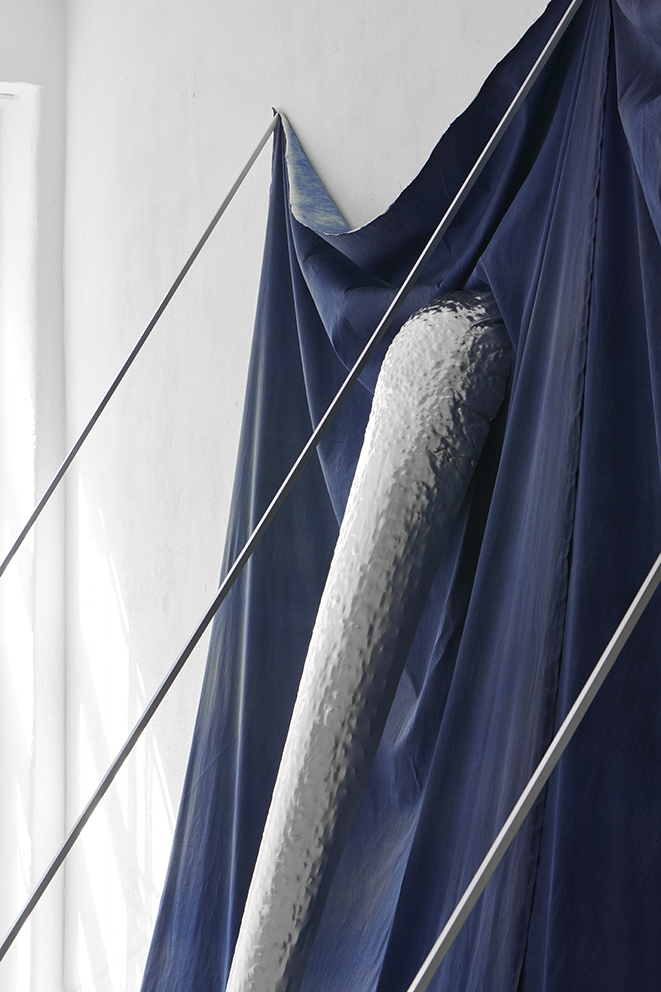




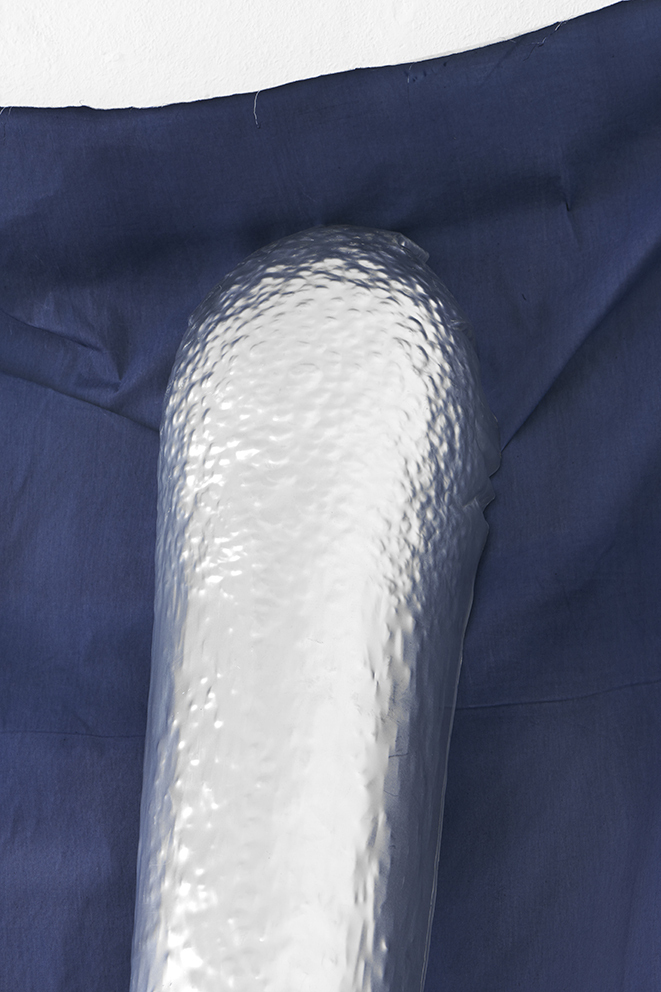
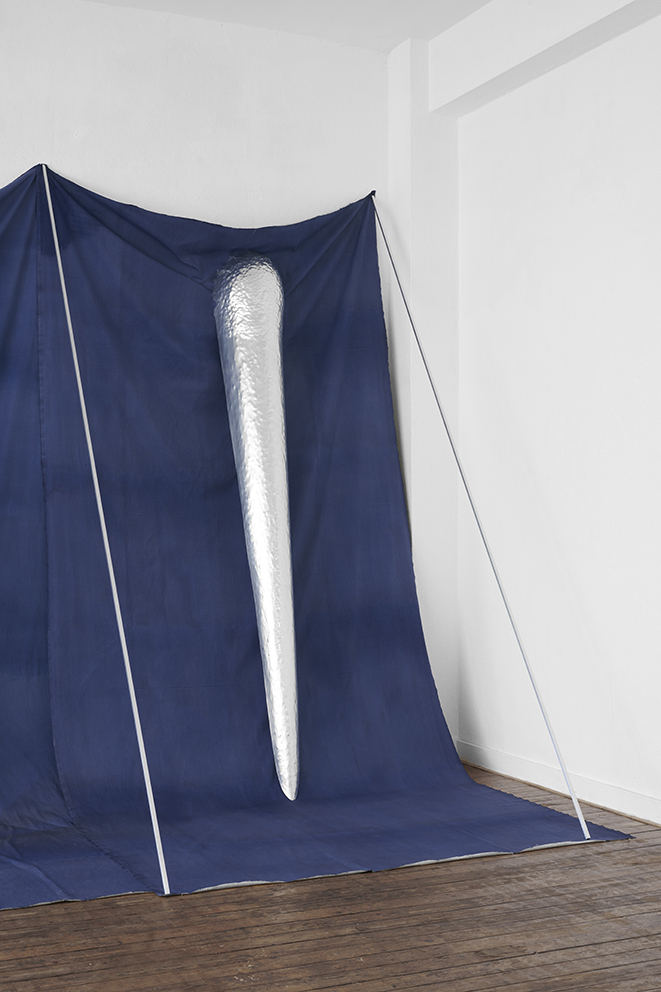
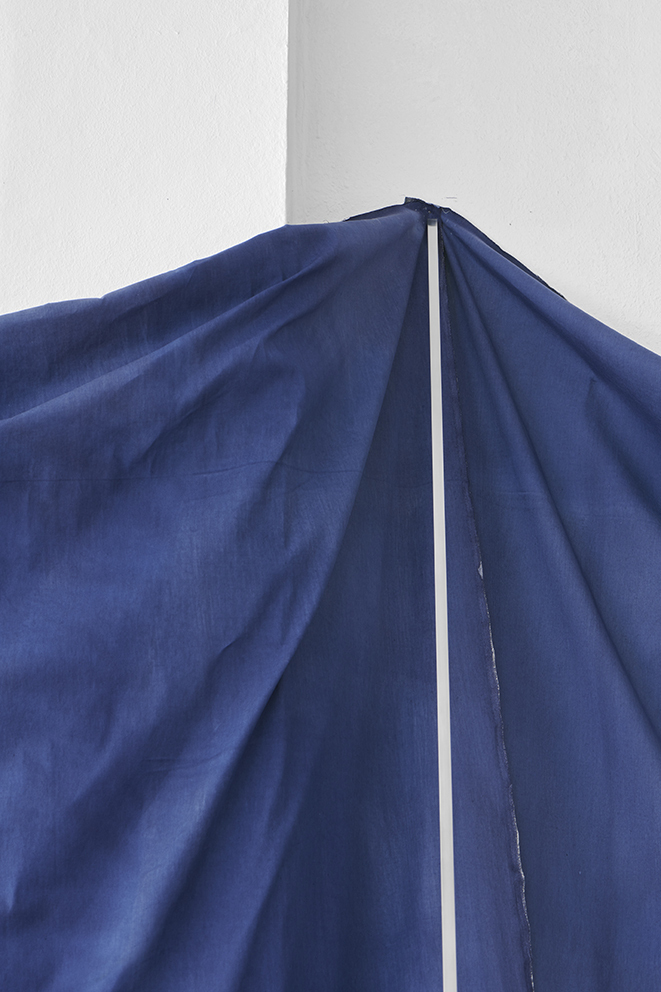
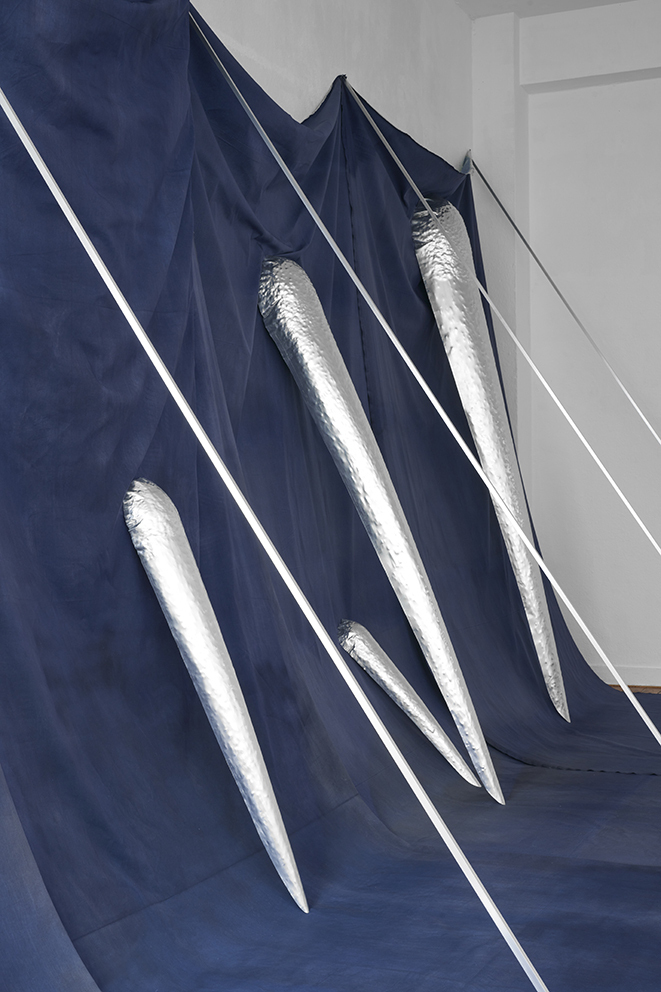
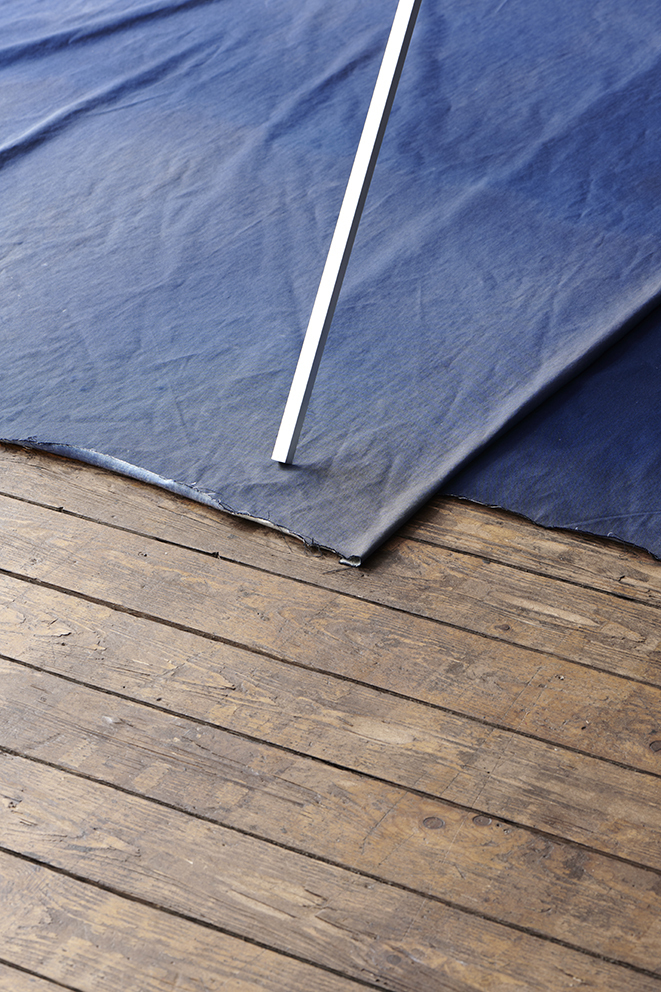
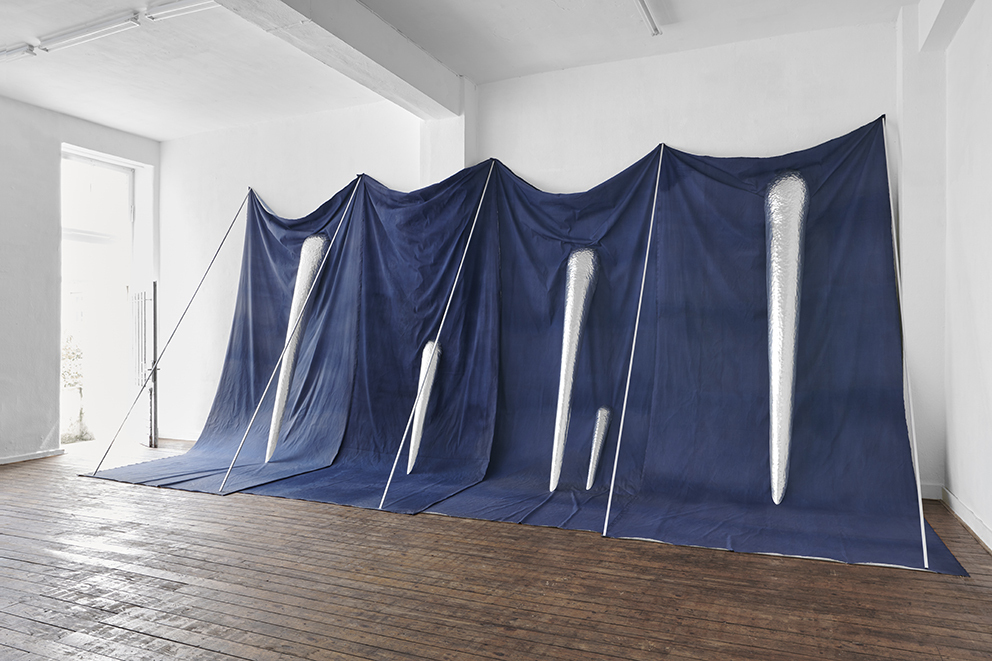
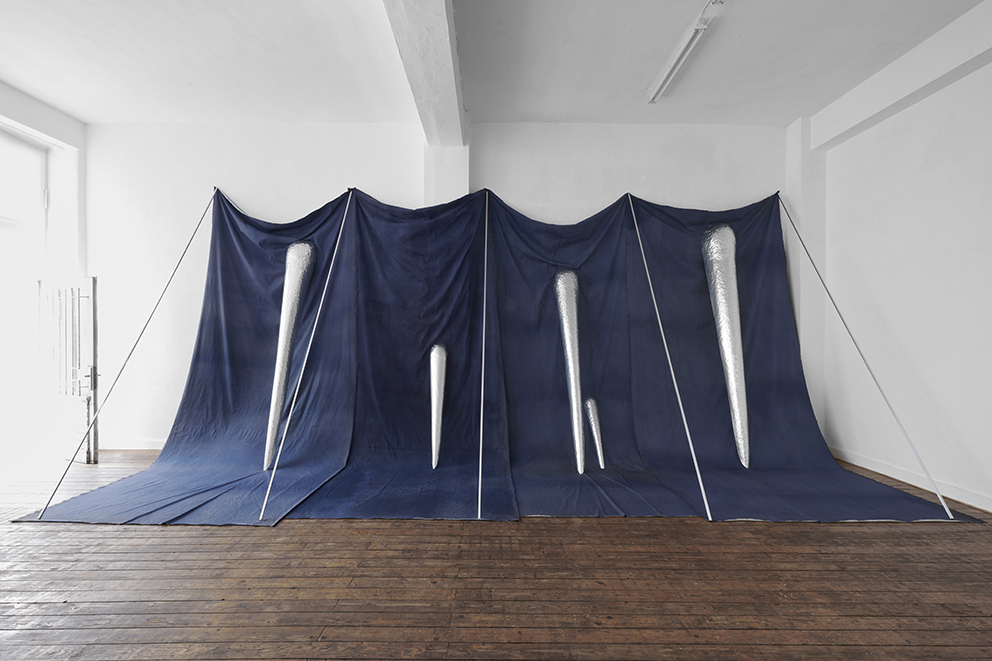
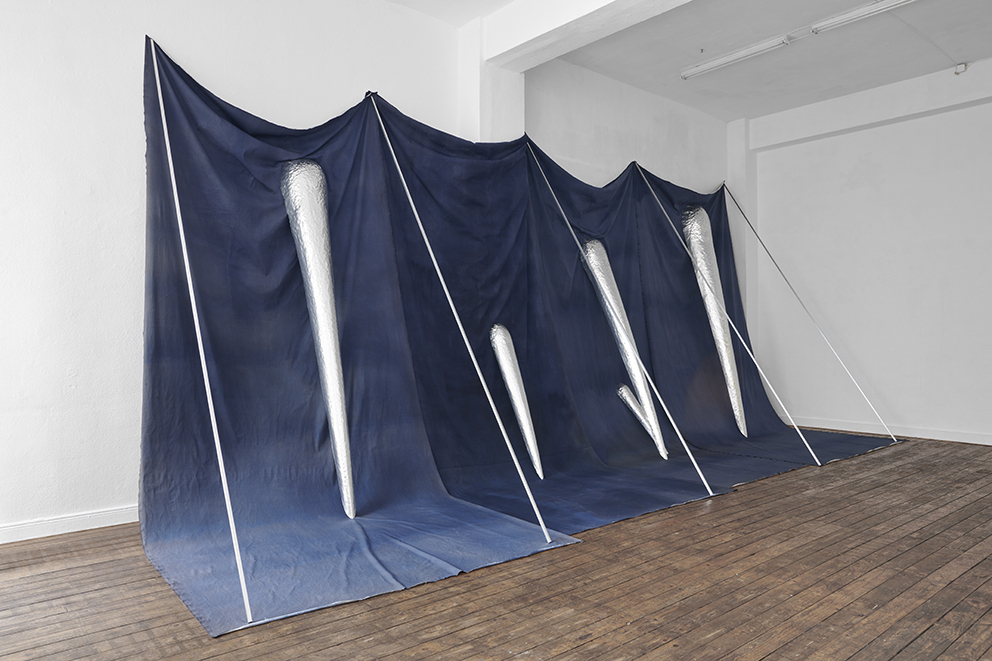
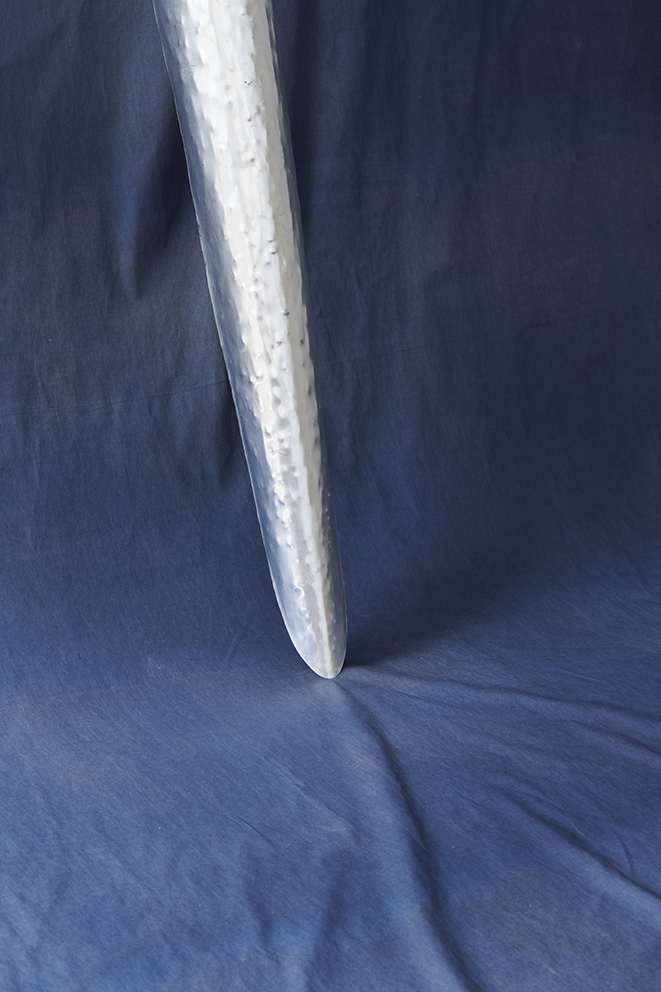
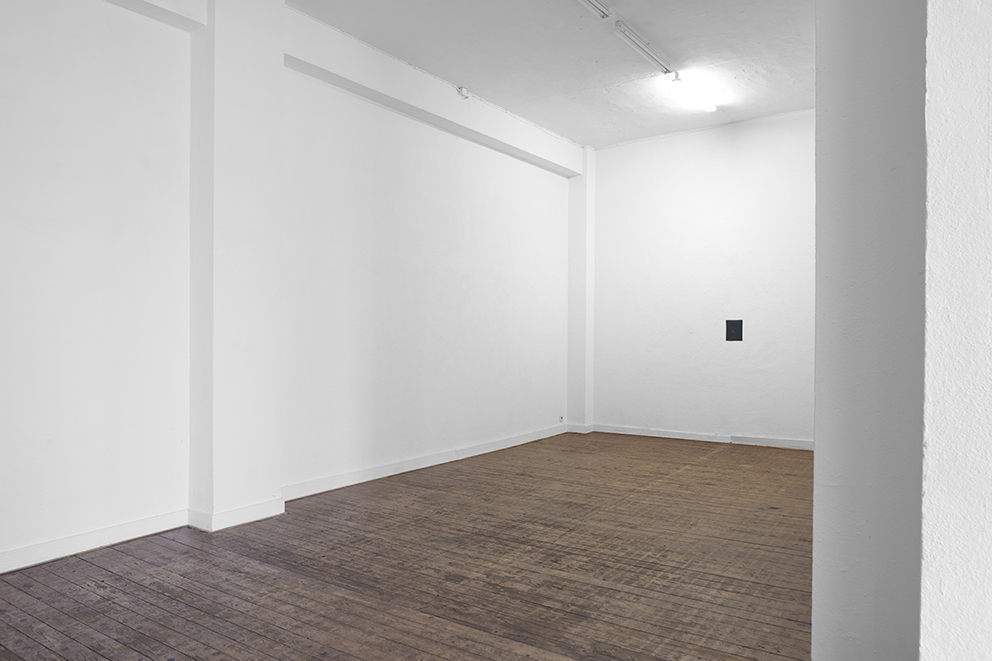
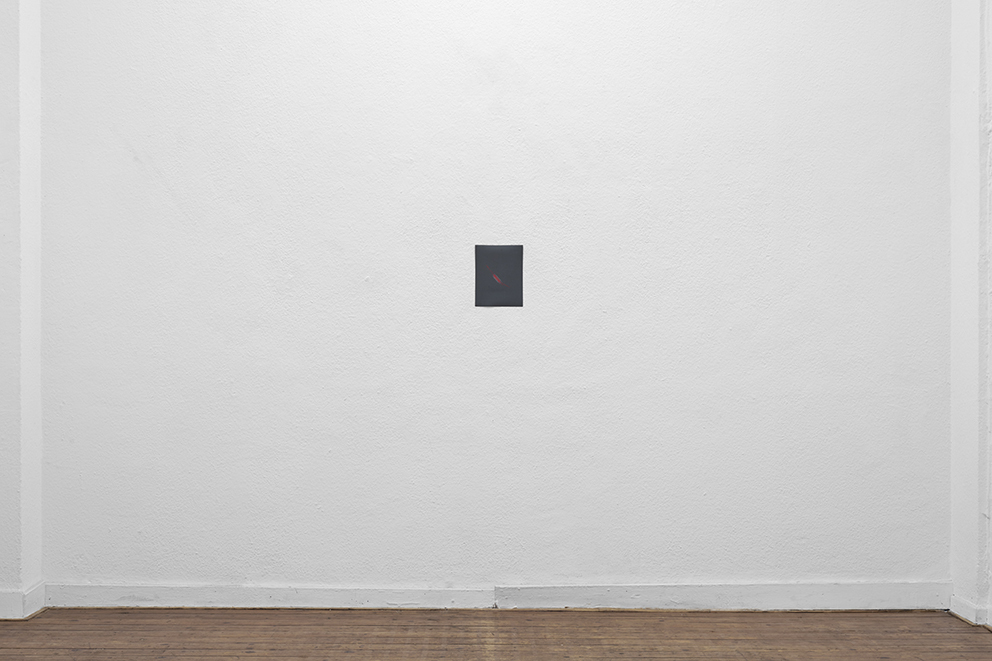

Location
Moltkereiwerkstatt e.V.Date
08.06 –09.07.2022Curator
Juliane DuftPhotography
Mareike TochaSubheadline
hold on Olga Holzschuh curated by Juliane Duft Finissage 10.July, 3-6pmText
OLGA HOLZSCHUH
HOLD ON
From the street through a dark driveway, into a shady courtyard, up a flight of stairs, around the corner, through the door. Shimmering aluminium objects, almost three metres high, block the way. They lean upright against the wall on the left, are rounded, become narrow downwards. Green-blue lengths of fabric float around the sculptures made of thin metal, spilling out onto the wooden floor. Olga Holzschuh's installation silently absorbs the light that falls diagonally into the courtyard. The aluminium sculptures are reminiscent of oversized body parts: empty shells, insect carapaces, fingernails, arms and rounded shoulders. The fabric is not a display, but itself a vague sculpture, part of a structure. Partly it is held by the sculptures leaning against the wall, at the same time the sculptures stand on it - only on a single point, on their tips. Formerly green, the fabric changes to dark blue in diffused patterns. As a huge cyanotype, it photoreactively reproduces the light situation(s) in the room.
You could call Olga Holzschuh's installation surreal. However, one should not neglect the reference to reality in her practice: Holzschuh started her work in photography. Today, she still collects indexically—just in different techniques. She collects imprints and traces of poses and postures of the human body. With elbows, necks and shoulders, she particulary focuses on the body‘s supporting structures. In previous works, she has photographed, moulded or repetitively traced her own body parts and those of other people. Her series of cropped joints and bones resemble studies. With the body we move through the world, we perceive the environment and we react to it with it, almost "seismographically": with tension, flexible looseness, an open posture or curved defensiveness. Holzschuh is less concerned with individual aspects in her studies. She examines the psychological states and mental attitudes that express themselves in different postures. Since 1981, the Moltkerei-Werkstatt¹ has presented unfinished, processual art; for a long time, it stood specifically for performances and installation sculptures rooted in the art of the 1970s. Body, observation and the collective traditionally meet here. Holzschuh's quasi-phenomenological orders now point to the body in the present: as a physical force field as well as a sign. Her "bent necks" and "cold shoulders" point to the signalling function of the body in the social realm and also its significant role in photographs circulating online. Today, more than ever, the body is under constant observation. Especially in times of instability and crisis, it shows itself as a physical crystallisation point of social forces—of standardisation, sexualisation, fetishisation, exploitation or (self-)optimisation.
The sculptures, which are much larger than herself, were hewn into shape by Olga Holzschuhs own bodily strength inside out. In this process, she has run up against her own physical limits. She molded her body into the sculptures and thus added a very personal dimension to them. On the other hand, the shoulder in the sculpture’s upper part is abstracted, seems monstrous in its inflated scale and uneven surface structure. Like sea creature shells, the objects hide their interior from the viewer. Due to their downward tapered form, the sculptures simultaneously appear like standing figures—classical sculptures. Like Isa Genzken's "Hyperbolos" they are similary related to and at the same time alienated from humans. Since 1982, Genzken no longer placed her „Hyperbolos“ on the floor, but leaned them against the wall, making them turn into „persons“ even more than before.
None of Holzschuh's figures stands on its own. Together with the rhythmically placed, technically smooth supports and the canvas, the standing sculptures form a fragile static system. If one element falls away, this system collapses. Gravity, which affects all kinds of bodies, becomes visible. For philosopher and activist Simone Weil, life is primarily determined by light and gravity: "Two forces rule the universe: light and gravity."² According to her aphorisms, life is constant work against gravity; it follows fine mechanics, runs in amplitudes and is in constant change. What structures and forces hold us? What makes them waver? And what situations, co-existences and practices do we hold ourselves to?
In her essay "Formless", Rosalind Krauss describes the production of monstrous, uncanny images as a protective strategy: "To produce the image of what one fears, in order to protect oneself from what one fears - this is the strategic achievement of anxiety, which arms the subject, in advance, against the onslaught of trauma, the blow that takes one by surprise."³ In the tableau that Holzschuh's installation creates, even one mor image emerges, as an imprint in the photoreactive fabric. Where light acts, the fabric turns dark blue. The shadows and reflections of the sculptures, the light leave traces in the fabric. Exposed and shadowed parts mix with the actual shadows of the fabric folds. The exhibition time is the exposure time. Waiting for an uncertain image. What happens afterwards is Olga Holzschuh's decision: she can stop the process, capture the "imprints" in the fabric by washing out the chemistry with water. Or she can expose the traces created in the installation completely to the light and let them disappear in the dark blue.
Juliane Duft
1 The Moltkerei-Werkstatt, located in a Cologne backyard, has always remained a workshop. Since 1989, it has been a place for processual art based on physical experience, in the wake of Happening and Fluxus. Artists such as Marina Abramovic and Ulay, Terry Fox and Peter Weibel have exhibited here. "Artists lived and worked in the space on Moltkestraße for a few weeks or days and developed an art in transformation at the site," Jürgen Kisters describes the site-specific practice, "(...) thus a jump from the stairs into the depths of the garage in the courtyard of the Moltkerei- Werkstatt demonstrates the concept of an expanded concept of art that places the process (sic!) above the finished work of art." S. Jürgen Kisters: Die Kölner Moltkerei-Werkstatt, in: Kunstforum, vol. 117, 1992.
2 Simone Weil: Gravity and Grace (1952), London 2002, p. 1.
3 Rosalind Krauss: Uncanny, in: Yve-Alain Bois, Rosalind Krauss: Formless: A User's Guide, New York 1997, pp. 192-197, here p. 196.
Juliane Duft